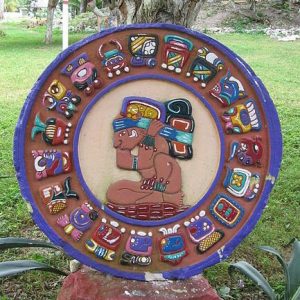December 22, 2016

By Eytan6
by Sharonah Fredrick, Assistant Director of the Arizona Center for Medieval and Renaissance Studies at ASU
How did the medieval Norse and Inuit peoples adapt to their changing climates in 14th century Greenland? Can people today learn from these histories?
On October 6, 2016, the School of Sustainability, the School for Social Transformation, and the Arizona Center for Medieval and Renaissance Studies (ACMRS) came together to grapple with these kinds of imaginative and scholarly questions. At an event titled “Climate Change in Historical Perspective,” panelists covered topics that moved from the ancient Americas through medieval Greenland, and from contemporary communities threatened by climate change in Ecuador and Morocco through ethnogeological studies of Diné (Navajo) and other Indigenous knowledge of Earth systems and processes.
With reference to ancient documents and stories, panelists posed interdisciplinary questions to the audience to break through artificial barriers between the arts, social sciences/humanities and the sciences.
For example, did ancient Navajo, Maya and Andean conceptions of land and stewardship – expressed in their art and glyphs – guard against over-exploitation of resources? Could ancient Navajo, Maya and Andean understandings of land stewardship help modern cultures counter or adapt to desertification, melting glaciers or rising seas? How might these histories expand understandings of how ancient peoples either managed well or mismanaged resources, and how might this knowledge help people today to address global environmental challenges?
Included on the panel were Mary Jane Parmentier, a professor in the School for the Future of Innovation in Society; Steven Semken, a professor in the School of Earth and Space Exploration; and Stephen Romaniello of the School of Earth and Space Exploration. The experts came together at the request of ACMRS’ Assistant Director, Sharonah Fredrick – an anthropologist who specializes in the history and literature of the Early Modern period in Latin America, Western Europe and West Africa (1450-1789).
Each panelist is a sustainability scholar or scientist at the Julie Ann Wrigley Global Institute of Sustainability, which allows them to network with their colleagues in literature, history, geology, sociology, physics and astrophysics.
This event – illustrative of the kind of interdisciplinary work being piloted by ASU’s Environmental Humanities Initiative (EHI) – revealed the scale and significance of acute human impacts on environmental resources, as well as the the history of atmosphere and climate in the context of chronic natural changes over “deep” or geological time.
ACMRS looks to continued work with EHI and the ASU Wrigley Institute to brings humanities methodologies and content into sustainability research.

